The Tour de France, an annual multi-stage bicycle race set primarily in France, is perhaps the most well-known cycling event in the world. But did you realize the 2014 course has a connection to the history of glassmaking?

Stage 8 of the Tour de France. (source)
Looking at a map of the course for Stage 8 led me to connect the place names with the world of glass. That portion of the course was in northeastern France, often referred to as the Lorraine area, now the Meurthe et Moselle département (“political subdivision”). Stage 8 started at Tomblaine, which is near Nancy, an important glassmaking center famous for its ties to well-known artists and firms such as Galle and Daum, both featured in our current Library exhibition Designing for a New Century: Works on Paper by Lalique and his Contemporaries.
Cities with a glass history near the day’s route included Luneville (home to Müller Frères), Baccarat (home of Baccarat, est. 1764), Vannes le Chatel, and Moselle (home to Verreries de Meisenthal, 1711?-1969). The Verrerie de Portieux, located in Portieux north of Epinal, has roots going back to 1705; in 1878, it merged with Vallerysthall (est. 1707), which was located near Strasbourg. Also near Strasbourg, in the Alsace area, is the town of Bitche (home to the Cristallerie de Saint-Louis) and the town of Wingen-sur-Moder (home to the Lalique factory since 1921 and the site of the new Musée Lalique).
- Les Hommes noirs (The dark men) by Emile Galle, 1900 (2011.3.1)
- Lalique design. Image from Art & décoration (CMGL 37031)
- Egg Handcooler from the Compagnie des Cristalleries de Saint Louis, c.1845-1855 (78.3.106)
- [Micheville chalice] by Cristallerie Daum, c. 1910 (CMGL 134619)
- Trade card from Cristalleries de Saint Louis, Munzthal St. Luis, Alsace-Lorraine, France, 1924.
- Gueldre, Chabot, and Caprille by Baccarat, c.1950 (51.3.210)
- [Original designs for glassware] by Auguste Herbst for Galle (CMGL 133424)
Not to be overlooked is the stained glass in Metz Cathedral, north of Tomblaine, with windows from 14th and 16th century glass artisans as well as 20th century artist Marc Chagall. More stained glass, art glass, and art nouveau work are on display at the Musée de l’Ecole de Nancy.
The Alsace Lorraine region has a long history of ties to glassmaking, going back to at least the 15th century. The forests provided wood for fuel, as well as potash – one of the key ingredients for glassmaking – which could be found in forest ferns. Although many of the local companies have closed, the region remains connected to glass. In 1992, the Centre International d’Art Verrier (CIAV) opened in part of the closed Meisenthal factory. Its workshops, facilities for contemporary artists, and exhibitions continue the region’s ties to glass. Another effort to connect the past with the country’s rich history of glassmakers is a genealogical organization, Genealogie des Verreries d’Europe (Gen Verre), whose magazine, Eclats de Verre, is held in the Rakow Library.
The Rakow Library’s collection includes a wide variety of material for those interested in researching French firms and artists. Please contact us with your specific interests for more information.
The Rakow Research Library is open to the public 9am to 5pm every day. We encourage everyone to explore our collections in person or online. If you have questions or need help with your research, please use our Ask a Glass Question service.


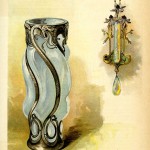

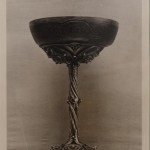
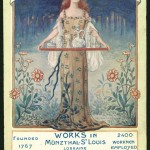
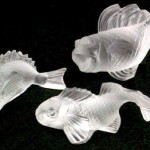
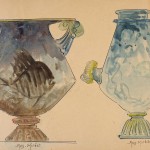
2 comments » Write a comment